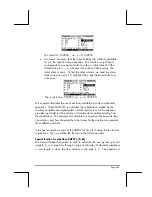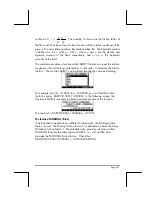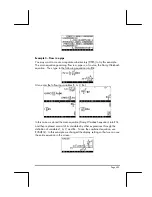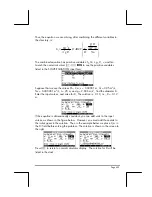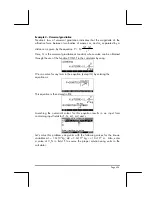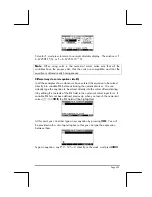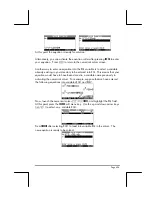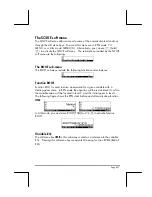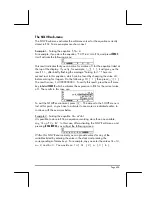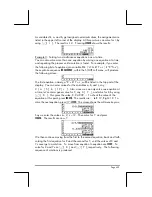
Page 6-21
written as
g
V
D
L
f
h
f
2
2
⋅
⋅
=
. The quantity
f
is known as the friction factor of
the flow and it has been found to be a function of the relative roughness of the
pipe,
ε
/D, and a (dimensionless) Reynolds number, Re. The Reynolds number
is defined as Re =
ρ
VD/
µ
= VD/
ν
, where
ρ
and
µ
are the density and
dynamic viscosity of the fluid, respectively, and
ν = µ/ρ
is the kinematic
viscosity of the fluid.
The calculator provides a function called DARCY that uses as input the relative
roughness
ε
/D
and the Reynolds number, in that order, to calculate the friction
factor f
.
The function DARCY can be found through the command catalog:
For example, for
ε
/D = 0.0001, Re = 1000000, you can find the friction
factor by using: DARCY(0.0001,1000000). In the following screen, the
function
NUM () was used to obtain a numerical value of the function:
The result is f = DARCY(0.0001,1000000) = 0.01341…
The function FANNING(
ε
/D,Re)
In aerodynamics applications a different friction factor, the Fanning friction
factor, is used. The Fanning friction factor,
f
F
, is defined as 4 times the Darcy-
Weisbach friction factor,
f
. The calculator also provides a function called
FANNING that uses the same input as DARCY, i.e.,
ε
/D and Re, and
provides the FANNING friction factor. Check that
FANNING(0.0001,1000000) = 0.0033603589181s.














